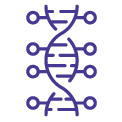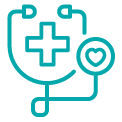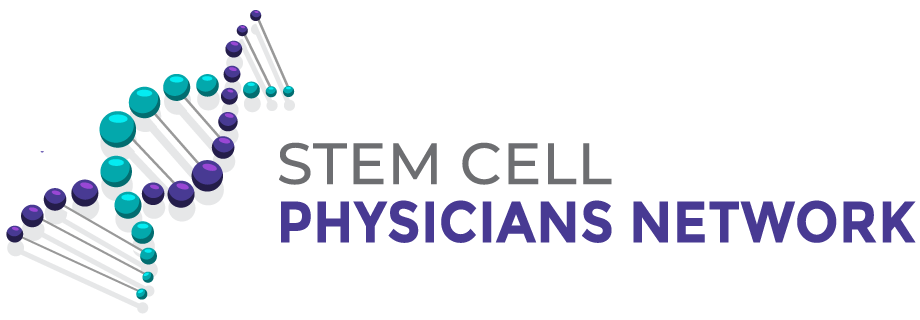Stem cell therapy can help you take control of your health!
Stem Cell Physicians Network is a service designed by Dr. Joseph Christiano to help connect you to qualified doctors that offer stem cell therapy.

Repair Damaged Cells

Relieve Pain
Stem cells can help repair and regenerate the part of the body that affected while helping to relieve pain.

Reverse Inflammation
Why you should use Stem Cell Physicians Network

Find reputable doctors in your area

Find all the information about what a doctor offers in one place.

We are continuously adding more doctors
We will be consistently adding new doctors to our directory, so that you can find one that fits your needs, in a convenient location.
How Stem Cell Physicians Network Works
It’s as easy as 1 – 2 – 3!

1 - Get started in less than 30 seconds
It will only take a few seconds to get started. Simply click the “Get Started Now” button to enter your name, email & zipcode – that’s it!

2 - Browse the directory for a provider
Browse the directory to find the stem cell therapy providers that meets yours needs.

3 - Call or visit the provider's website
Once you find a preferred provider, use their contact information to schedule your consultation.
Frequently Asked Questions
Who is a candidate for Orthopedic Stem Cell Therapy?
In the past if a patient had serious joint dysfunction or persistent musculoskeletal pain i.e. in the knee, back, shoulder, elbow, hips, neck, wrists, etc. their options were very limited. The typical protocol or choices were; pain medication, steroid shots and anti-inflammatories and see how you would do. Lastly, the patient would be facing joint replacement surgery and hope it was successful.
Today you have another choice!
Many scientists and doctors agree that Stem Cells are the medicine of the future. As far as orthopedic problems go, this approach is now available and for many, may very well be the treatment of choice and yield a far superior result than more conventional approaches.
What does the treatment involve and how does it work?
The procedure is non-surgical and performed in an outpatient environment. Approximately 60-100 ccs (some cases more) are harvested from a patient’s own belly fat. After numbing the skin, this mini-liposuction procedure is done with large syringes under low pressure and takes about 45 minutes. The stem cells are isolated through a special process in a lab that takes about 90 minutes. Then the isolated stem cells with growth factors are mixed with a simple blood draw (called Platelet Rich Plasma or PRP). Next the stem cell/PRP combo is injected at the specific joint and ligament sites that are the root cause of the problem. The stem cells will remain alive for about 6 months and will continue to regenerate and rebuild the damaged tissues during that period. Within 2-4 hours the patient can go home.
When is stem cell therapy and PRP recommended?
PRP (platelet rich plasma) is prepared in about 45 minutes from a simple blood draw. PRP represent natural growth factors that can activate your naturally occurring stem cells. If the damage is not too severe and has not been there too long, PRP by itself might take care of it. If the damage or injury is more severe, stem cells with PRP may be required for faster and more complete healing. PRP usually takes three sessions to complete the healing. Spacing post visits at least 2 weeks apart to allow healing to occur.
What kinds of problems can stem cells treat and what is the success rate? How long do the benefits last?
Our findings are that stem cells have the capacity to regenerate all types of tissues, which includes; cartilage, bone, ligaments and tendons. Stem cells detect specific damaged tissue(s) and then repair them selectively. Results up to 80% for conditions i.e. bone-on-bone arthritis of the knee and hip, rotator cuff, various types of back pain and neck pain and many other chronic orthopedic issues can be anticipated. If the stem cell therapy is a success and the joint or connective tissue structure is regenerated, there is every reason to believe that this will be a long-term solution.
How long before patients improve and what is the follow-up?
Patients often ask how long before they feel improvement. Stem cells rely on a patients own healing response so it is impossible to predict who will heal faster. In some patients, in some joints the stem cells will ignite fast and heal rapidly and the patient may notice marked improvements even within the first week. For others, the process may take 6 weeks before they experience improvement. For those who have a very chronic condition a 4-6 week PRP follow-up treatment may be most beneficial.
Is stem cell therapy safe?
Orthopedic Stem Cell therapy is a minimally invasive and very safe procedure. There is only minimal soreness after their mini liposuction and the injections. There is no risk of infection as the stem cells are those of the patient. Common sense activities without weight bearing loads plus stretching for the first few weeks is helpful stem cell regeneration and tissue repair.
How much does stem cell therapy cost and does insurance cover it?
Stem cell therapy sessions vary among physicians. A blood draw plus the mini-liposuction procedure, lab fees etc. could range from $2,000.00 – $7,000.00 per site – example knee or shoulder joint. For a more complex joint such as lumbar spine or hip or multiple sites the costs can be as high as $8,000.00+. Some physicians will discount the 2nd or 3rd sites by 50%. Many patients have two areas that require attention. In this case the second area is discounted 50%.
If the patient cannot afford stem cell therapy they can still benefit from PRP therapy. Though it would take several additional sessions, there is still hope for tissue repair and healing. There is high expectation that insurance companies will be covering this technology in the near, future. Some stem cell clinics offer payment plans.
How many stem cell treatments does a patient need? How long is recovery time?
Depending on the tissue damage, severity of the condition, the size of area that needs to be injected and most importantly patients healing capability. Patients usually need only one treatment unless their condition is very severe in which case additional treatment are recommended. Each treatment is independent of all the others, meaning each treatment by itself has benefits, there is usually no down time and the patient can go back to work or their usual activities immediately.
What is the most important reason people want this treatment?
It depends upon the individual. Some want to just be pain free, some are looking for range of motion, some need more strength, some want to go back to activities that brought them this far such as playing Golf, Tennis, Dance, Soccer, Football. For some others, it is important not to think twice about getting up only to get a glass of water or just being able to walk again. In general people like to be functional again.
Can doctors use stem cells to treat patients?
The idea of a stem cell was proposed by researchers who were working on embryonic development because they saw that cells are the starting point for biological processes. Then, stem cells were first used for bone marrow transplants (BMTs). This is a procedure that was introduced as a treatment for cancer and genetic blood disorders in the 1960s.
Since then, the research continued and Doctors have used stem cells to treat patients. However, due to the potential risk that it would pose to a person’s health, they have since been put under strict approval and regulation process. Not all stem cell products can be administered to humans. The Food and Drugs Administration is conducting competitive reviews on stem cell products to determine the safety and effectiveness of products in well-controlled human studies through clinical trials. The purpose is obviously to ensure the product’s safety, purity, and potency.
What can doctors do with stem cells?
Currently, stem cells are used as research means to comprehend the very complex signals and mechanism of cell differentiation. The direction is simply not only for understanding the cause of the disease but also for the development of new therapies.
Stem cells are also being explored for their ability to replace cells that die during degenerative diseases. More so, it probes into how stem cells are capable of repairing cells in damaged tissues. A number of Doctors are using adult stem cells to investigate the power of stem cell medication. This includes treatments for retinal diseases, neurological conditions such as Parkinson’s and Alzheimer’s disease, heart disease, and type 1 diabetes.
Doctors have performed stem cell transplants, otherwise known as bone marrow transplants and they have been successful. In stem cell transplants, stem cells substitute cells that were damaged due to chemotherapy and other diseases. It also serves as a way for the immune system to fight specific types of cancer and blood-related diseases such as leukemia, lymphoma, neuroblastoma, and multiple myeloma.
What are the types of stem cell therapy?
Stem cells are important for several reasons. They have an impressive potential of saving lives. Stem cell therapy can be grouped into three categories: pluripotent stem cells (PSCs), adult stem cells (ASCs), and cancer stem cells (CSCs), however, other types have also been discovered.
PLURIPOTENT STEM CELLS (PSCS)
Embryonic stem cells. Embryonic stem cells (ESCs) are found in the human blastocyst, an early stage of the developing embryo. ESCs once extracted can be cultured in the laboratory. Under the right conditions, there is a huge possibility for the cells to proliferate indefinitely. These are pluripotent stem cells. Pluripotent means, that this type of stem cell can divide into more stem cells or it can become any type of cell in the body. This unique attribute allows embryonic stem cells to be used to regenerate or repair diseased tissue and organs.
Embryonic stem cells (ESCs) may just be the most popular one but under this category, there are also the Epiblast stem cells (EpiSCs) and embryonic germ cells (EGCs) which are found in postimplantation embryos.
ADULT STEM CELLS (ASC)
Adult stem cells are the true gold standard in regenerative medicine. It is to be precise, the successful outcome of stem cell research because they are the only stem cell type that has demonstrated evidence of success when it comes to treating patients. These stem cells are found in most adult tissues, such as the bone marrow and fat. Although, compared to embryonic stem cells, adult stem cells have a more limited ability to give rise to various cells of the body.
Originally, researchers assumed adult stem cells could only create similar types of cells. However, undisputed evidence suggests that adult stem cells may also be able to create various types of cells. For example, bone marrow stem cells may be able to generate bone or heart muscle cells.
In 2012, an estimated 1 million people around the globe received adult stem cell transplants for hematopoietic conditions which give rise to the rapid growth of adult stem cell clinical use. Adult stem cells are distinctly advantaged as acceptable to all patients there being no popular case of failure.
There are different types of Adult Stem Cells. These are Hematopoietic Stem Cells (Blood Stem Cells); Mesenchymal Stem Cells; Neural Stem Cells; Epithelial Stem Cells and Skin Stem Cells.
CANCER STEM CELLS (CSCS)
These are tumor-initiating cells found within solid and blood tumors and originate from normal stem cells or progenitor cells. CSCs possess rare properties such as self-renewal, differentiation, metastasis, and immunosuppressive. Generally, the clinical use of CSCs is manifested in cancer settings and involves targeting CSCs by different signaling pathway-interfering agents that subsequently prevent cancer growth and relapse.
INDUCED PLURIPOTENT STEM CELLS (IPSCS)
Under this condition, scientists transform regular adult cells into stem cells using genetic reprogramming. By shifting the genes in the adult cells, the cells can act similarly to embryonic stem cells.
The reprogrammed cells will then be utilized instead of embryonic stem cells and prevent immune system rejection of the new stem cells. For instance, in studies where an animal with heart failure was injected with new heart cells experienced improved heart function and survival time. IPSCs are created through the introduction of embryonic genes into a somatic cell that causes it to revert to a “stem-cell like” state.
PERINATAL STEM CELLS
These are the stem cells found in amniotic fluid and umbilical cord blood. They can to change into specialized cells. Amniotic fluid fills the sac surrounding and protecting a developing fetus in the uterus. From the samples of amniotic fluid drawn from pregnant women through amniocentesis, researchers have identified stem cells.
How successful is stem cell therapy?
One study conducted titled Mesenchymal Stem Cells for Spinal Cord Injury: Current Options, Limitations, and Future of Cell Therapy published on the website of the National Library of Medicine, shows that Stem cell treatment has achieved positive results in over 45% of patients. According to the result. Patients saw improvement in less than 6 months, which compares quite well with back surgery which usually involves very long recovery times.

